One of the joys of planting a pollinator garden is watching majestic butterflies flutter in and sip...
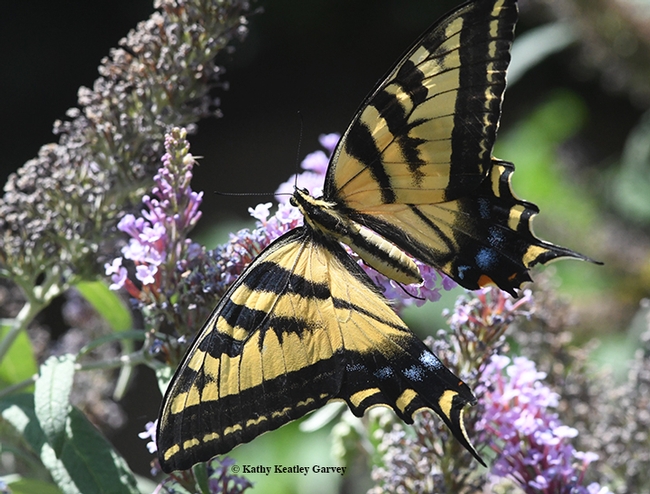
A "very gravid" female Western tiger swallowtail (Papilio rutulus) nectars on a butterfly bush (Buddleia davidii). (Photo by Kathy Keatley Garvey)
A "very gravid" female Western tiger swallowtail (Papilio rutulus) nectars on a butterfly bush (Buddleia davidii). (Photo by Kathy Keatley Garvey)
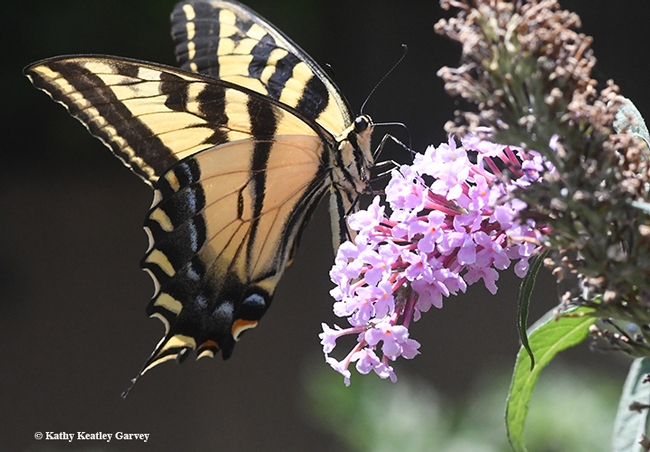
The gravid Western tiger swallowtail looks up from the butterfly bush. (Photo by Kathy Keatley Garvey)
The gravid Western tiger swallowtail looks up from the butterfly bush. (Photo by Kathy Keatley Garvey)
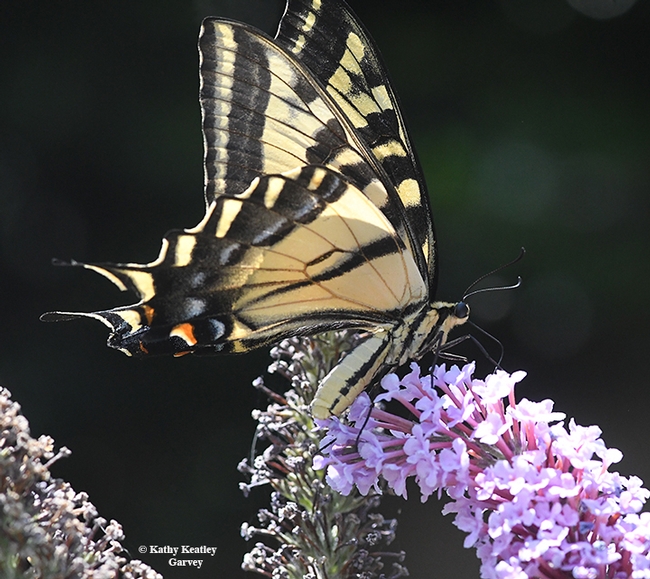
This image of the gravid Western tiger swallowtail shows the enlarged abdomen. (Photo by Kathy Keatley Garvey)
This image of the gravid Western tiger swallowtail shows the enlarged abdomen. (Photo by Kathy Keatley Garvey)
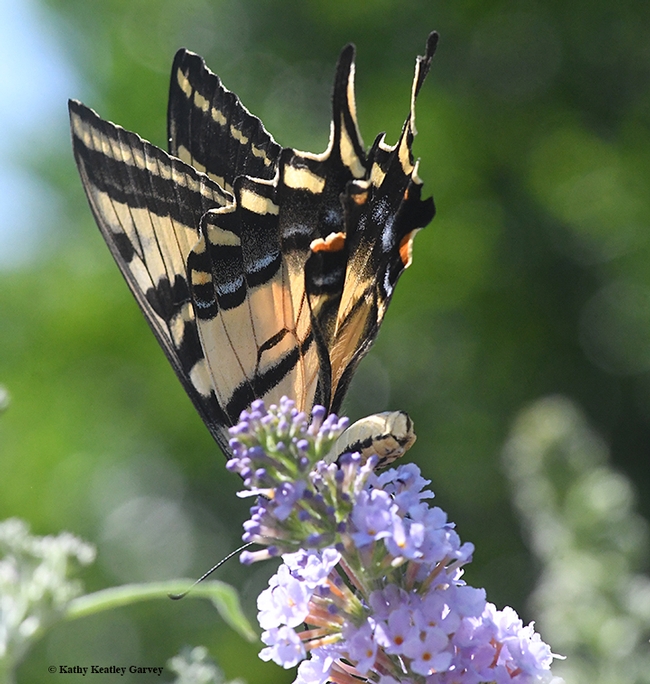
Orange and blue spots accent this yellow and black butterfly. (Photo by Kathy Keatley Garvey)
Orange and blue spots accent this yellow and black butterfly. (Photo by Kathy Keatley Garvey)
Posted on
Friday, July 27, 2018 at
5:18 PM
By Cindy Weiner, UC Master Gardener of Butte County, July 27, 2018
Many people rely on automatic...
Posted on Friday, July 27, 2018 at 5:00 AM
Graduate students and postdoctoral students that the legendary John Casida trained remember him...
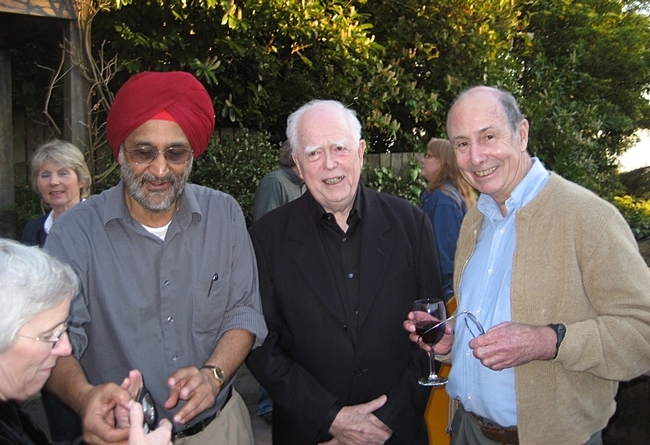
Distinguished professor John Casida (center) with his former graduate students Sarjeet Gill (left), a distinguished professor at UC Riverside, and Bruce Hammock, a distinguished professor at UC Davis. This image was taken in 2016 at UC Berkeley.
Distinguished professor John Casida (center) with his former graduate students Sarjeet Gill (left), a distinguished professor at UC Riverside, and Bruce Hammock, a distinguished professor at UC Davis. This image was taken in 2016 at UC Berkeley.
Posted on
Thursday, July 26, 2018 at
5:37 PM
Orange trees dotted the landscape and flowerbeds hugged most houses in the small town where I grew up. The fragrance wafting through the air was sweet. A variety of butterflies (Lepidoptera) must have thought so too, because they were everywhere. Swallowtails. Monarchs. Painted Ladies. Mourning Cloaks. And, of course, the little Skipper, Sulphurs and the Blue Copper, to name a few.
Needless to say, I spent a majority of my summers chasing these classy insects around the backyard, down dirt roads, over irrigation furrows and into open fields. Some found new homes in canning jars stuffed with twigs and leaves. Others were straight pinned to poster board after succumbing to alcohol-soaked cotton balls. Most shimmied right through my tiny fingers and resumed their flight, flitting and fluttering their stuff to the end of their days.
Many decades later, I still find myself drawn to butterflies. Whenever I'm outdoors, whether I garden, walk or sit on a bench, I keep hoping I'll spot one. I don't know if I'm intrigued by their metamorphosis from egg to caterpillar to cocoon to butterfly — or if my fascination is simple childhood wonder that a “bug” with such delicate wings exists at all.
Recently, my interest peaked again after learning that butterflies can have both male and female parts. It's a rare phenomenon called gynandromorphism. This anomaly is so rare that it is seen in only one out of every 10,000. Luke Brown, who is the lead lepidopterist at London's Natural History Museum, has encountered only three in his career. To view color photographs and learn more, investigate Business Insider article “10 Striking Photos of Half-Male, Half-Female Butterflies” by Harrison Jacobs, June 9, 2014 at
http://www.businessinsider.com/andrew-d-warren-photos-of-butterflies-2014-6For more information about Luke Brown and his work at London's Natural History Museum, read “A rare he-she butterfly is born in London's NHM” by Jennifer Carpenter, Science Reporter for BBC News:
http://www.bbc.co.uk/nature/14108204
In the meantime, while I stay on the lookout for a gynandromorph to chase, I'll savor the snapshot taken several years ago of a visitor who stopped by my front yard to smell a pretty pink dahlia.

Dahlia visitor. (photo by Launa Herrmann)
Posted on
Thursday, July 26, 2018 at
10:39 AM
Keep your lawn healthy during summer and throughout the year by learning more about proper mowing,...
Posted on Wednesday, July 25, 2018 at 11:00 PM









